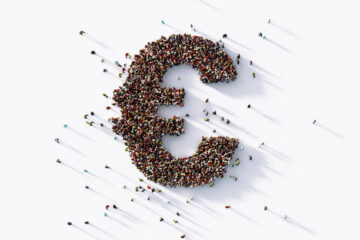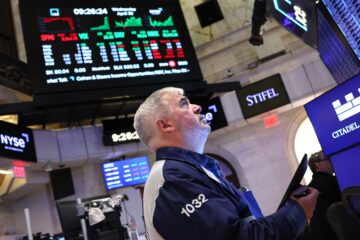Selling equity in Twitter could lower the debt of the social media company.
Elon Musk and his team are reportedly considering raising $3 billion to pay down Twitter’s massive debtload of $13 billion that calls for interest payments of $1.5 billion annually.
When Musk, the CEO of Tesla (TSLA) – Get Free Report, acquired Twitter last October for $44 billion, the billionaire took on $13 billion in debt to pay for taking the social media company private.
Musk and his advisors talked about selling $3 billion in new shares of Twitter last December to offload some of the debt, , according to the Wall Street Journal.
A successful equity raise could be allocated to pay the unsecured portion of Twitter’s debt that has the highest interest rate of 10% plus the secured overnight financing rate, said the sources who are familiar with the microblogging company’s finances.
Advertisers fled the platform after the acquisition closed as Musk reinstated users who were banned previously for racist, hate and anti-Semitic speech. Musk, who owns a nearly 80% stake in Twitter 2.0, said Twitter was losing more than $4 million a day in November.
The billionaire also entertained the idea of filing for bankruptcy, stating that it was an option for Twitter. Musk later gave a more favorable outlook for the company after he laid off over 6,000 employees and said Twitter would nearly cash flow break even this year.
Musk was comfortably atop the global wealth list a year ago, thanks to soaring share prices for Tesla. But with the collapse of the EV maker’s stock price, and his quixotic $44 billion acquisition of Twitter, he has seen his fortune shrink more than $100 billion and fall behind France’s Bernard Arnault, who heads up luxury goods maker LVMH Moët Hennessy Louis Vuitton
“I now think that Twitter will, in fact, be okay next year,” Musk said during a December Twitter Spaces. He added that the firm will “roughly” hit cash flow break-even. But “this will be difficult.”
Twitter last generated a profit in 2019 and during eight years of the past decade it reported a loss. In 2021, Twitter’s net loss declined to $221.4 million from $1.14 billion in 2020.
Twitter’s $13 Billion of Debt
Twitter’s $13 billion of debt was allocated to its balance sheet and had been contracted with a group of banks, led by Morgan Stanley and including Bank of America, Barclays, Mitsubishi UFJ Financial, BNP Paribas, Mizuho Financial Group and Societe Generale.
As a result, Twitter’s debt is split between $6.5 billion that was meant to be sold to leveraged-loan investors, and $6 billion of bridge loans, split equally between a secured and unsecured tranche, that banks had planned to sell in the form of junk bonds, according to Bloomberg News.
All the debt appears to have quarterly interest payments, according to a debt commitment letter filed with the Security and Exchange Commission.
The first payment is due at the end of January and is around $300 million according to Bloomberg News’ calculations, which are based mainly on the commitment letter.
Equity Raise Could Lower Debt Payments
Whether the fundraising conversations are continuing remain unknown, according to the WSJ.
Musk’s team spoke to its current and potential shareholders to raise new equity capital at the original acquisition price of $54.20 a share in mid December, the WSJ reported.
The team had sought to raise more capital by the end of 2022, according to an email that prospective investors received. The email did not mention a total amount that would be raised nor what the purpose of the capital would be.
Concerns about Twitter’s future financial prospects were brought up by wary potential investors.
Raising more capital by selling a Twitter’s stake would dilute the value of the shares owned by current investors.
Generating more capital from the original valuation amount could be extremely challenging. Investors such as Fidelity, which manages retirement accounts and backed the privatization of Twitter, already wrote down its stake in the social media company by 56%, according to public filings.
The banks that own the $13 billion in debt did not receive a formal notice of a repayment plan, people familiar with the matter told the WSJ.
The most expensive portion of the debtload is the $3 billion of unsecured bridge loans because they have a variable interest rate of 10% plus the secured overnight financing rate, which is a benchmark interest rate that has risen in 2022 and is 4.3% currently.
Since the overnight rate was 0.3% when Musk announced his takeover offer last April, Twitter’s interest costs have risen by over $100 million.
The first quarterly payment is due within several days and without refinancing, the interest rate rises by 0.5% each quarter, according to regulatory filings.
The interest rates for the remainder of Twitter’s debt are lower – the $6.5 billion in term loans carries an interest rate of 4.75% while the $3 billion in secured bridge loans have an interest rate of 6.75%. Both the term loans and secured bridge loans also pay the overnight rate.
Last December Musk announced he plans to resign as CEO of Twitter. He is currently seeking a successor to take the helm at the social-media company, but no details have been provided.


